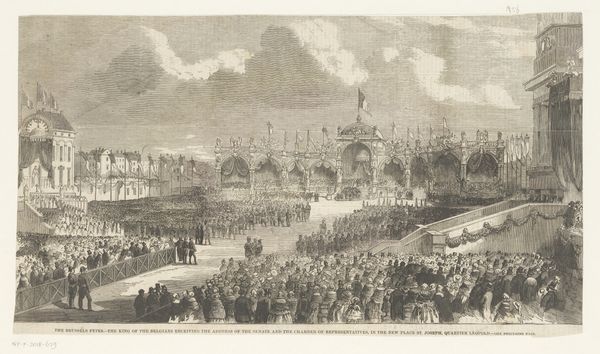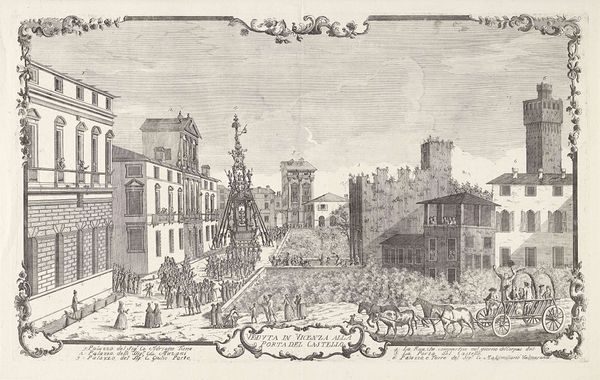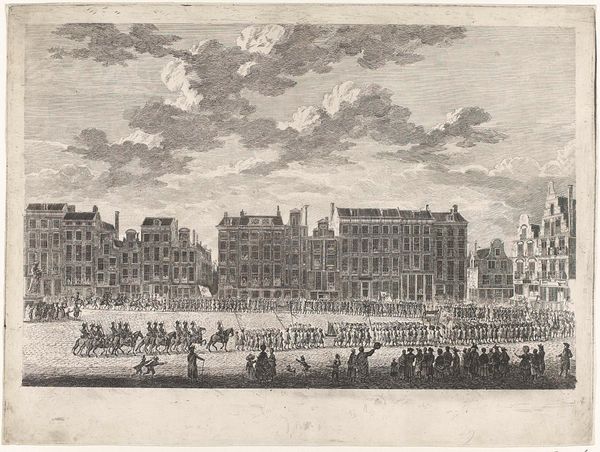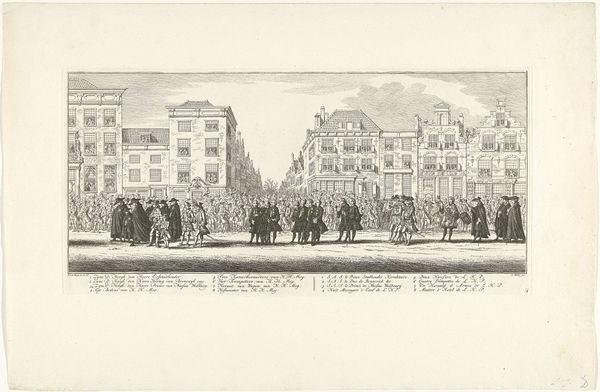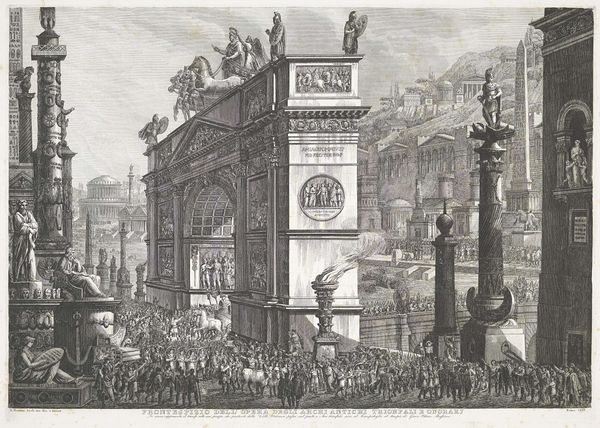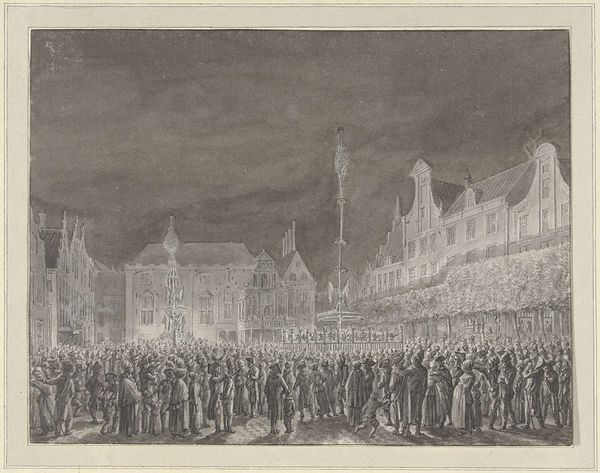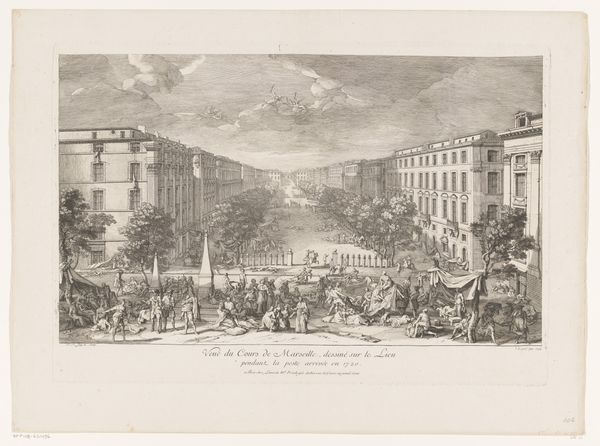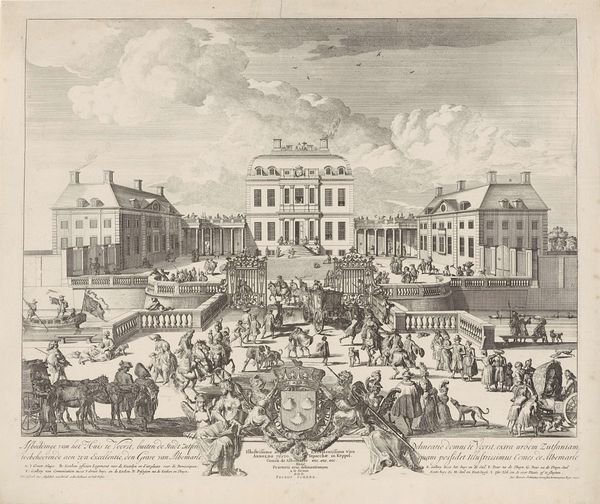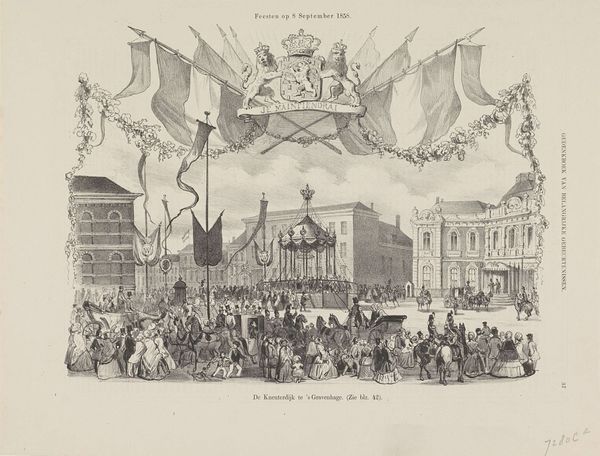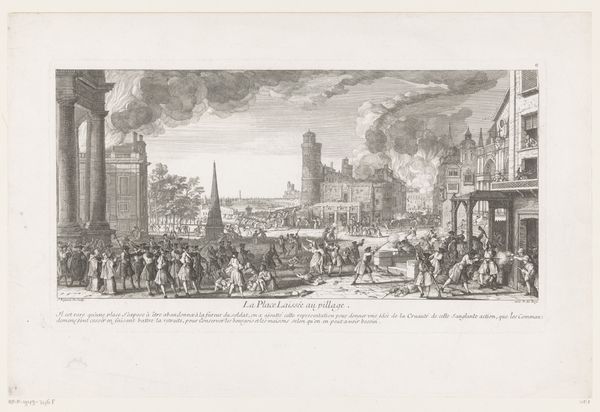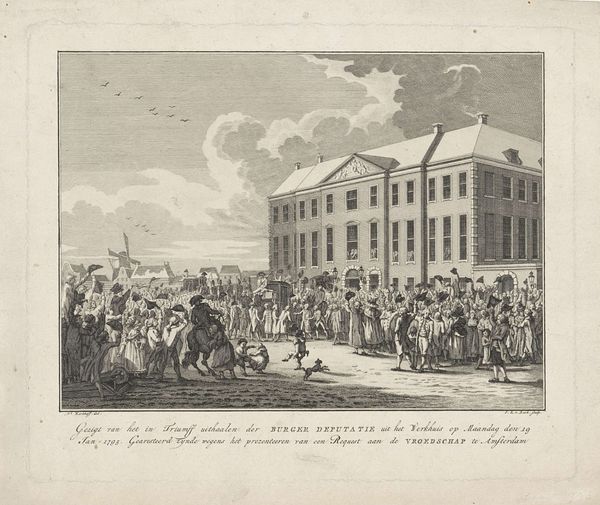
Inhuldiging van Willem I te Brussel op 21 september 1815 1826 - 1972
0:00
0:00
Dimensions: height 615 mm, width 800 mm
Copyright: Rijks Museum: Open Domain
Editor: This is "Inhuldiging van Willem I te Brussel op 21 september 1815" by Jacob Ernst Marcus, dating from 1826-1872, at the Rijksmuseum. It's an engraving, incredibly detailed with a cityscape filled with people. What I find striking is how, despite the supposed grandeur of the event, there's a real sense of distance. What do you see in this piece? Curator: Indeed, there's a staged quality that begs us to look beyond the surface of triumphant unity. Consider the date; even though it's labeled as 1826 to 1872, the historical event is 1815. We must consider this artwork's temporal location to consider the narratives that the artwork performs through both image and the creation date. What social and political tensions might be lurking beneath the surface that prompted its creation decades later, perhaps reflecting anxieties around Dutch rule and Belgian identity? Editor: That's fascinating. So, the act of creating the print becomes almost a commentary in itself? Is it the artist intentionally commenting on the power dynamics of the time? Curator: Precisely. And the choice of medium is key too; engraving and etching as printmaking techniques are designed for reproduction. It made the image accessible. Who was the intended audience? What was Marcus' intention in circulating this image widely? What were his ties with Belgian nationalists? How might understanding Marcus’ own personal background allow us to understand the print in a more personal, grounded way? Editor: That adds another layer. It's not just a historical record, but also an active player in shaping public opinion or perhaps even fueling a specific narrative. Thank you for highlighting the importance of the image's later context. Curator: Absolutely. Seeing artworks as products of their time— and as interventions within it— reveals power structures and ideologies shaping not just artistic production but the historical narrative itself. Thinking about the politics of the image transforms the work for the modern audience, and how that can be translated through education today. Editor: I'll definitely be looking at history paintings with a more critical eye now, considering who benefits from their portrayal of events!
Comments
No comments
Be the first to comment and join the conversation on the ultimate creative platform.
